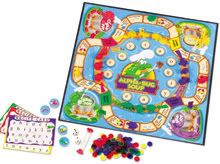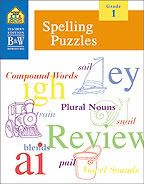When a child learns to talk, he is actually acquiring skills in four different areas: sound (phonology), vocabulary (semantics), syntax (grammar and morphology) and usage (pragmatics). When any one of these areas is defective, a communication problem results. While all of these areas are important, only one, phonology, will be addressed in this article.
The improvement of inadequate phonology has been one of the major tasks of speech-language pathologists. Until the 1970s, the typical remediation approach involved teaching sounds, one-by-one to a pre-selected criterion (for example, 90% accuracy). If a child had multiple sound errors, the process usually took years (Kahn, 1985).
In the 1970s, speech-language pathologists began revising their approach to sound remediation, especially in the cases of the severely unintelligible child. They started looking beyond the individual sounds and set about identifying patterns of errors called phonological processes.
All children use phonological processes (rule governed simplifications of the adult form) as they learn to talk. These processes normally drop out as the child progresses toward adult speech. When they do not, speech intelligibility remains at a level expected of a younger child. The more phonological processes a child uses, the more unintelligible he is to the rest of the world.
According to Hodson and Paden (1991), if a child uses a basic process more than 40% if the time, the process is clinically significant and requires remediation. The phonological approach provides a systematic way of teaching the sounds of the language quickly and efficiently.
While both phonological remediation and traditional articulation therapy focus on speech productions that are acceptable and intelligible, they differ in many other areas, such as, goals, acceptance of misproductions, and reinforcement (Khan 1985). Traditional therapy techniques emphasize mastering sounds (90% accuracy) in increasingly more complicated contexts (syllables, words, sentences, etc.); whereas the phonological approach focuses on suppressing phonological processes. As a phonological process is inhibited, the sound system becomes more similar to the adult system and the child's speech becomes more intelligible. Any production in which the targeted process has been eliminated is judged to be "correct", even though a sound may be produced incorrectly.
Keeping in mind that the ultimate goal is correct sound production, misproductions in the early phase of treatment are accepted if the targeted phonological process has been eliminated. For example, when a child says "ho" for "home", he has used the phonological process known as deletion of final consonants. Utilizing the phonological approach, the clinician will devise a program that focuses on teaching the child to produce "a sound" at the end of target words. While a specific sound is preferred, any consonant sound produced at the end of the word is accepted. The verbal feedback (reinforcement) a clinician gives after these misproductions is critical. While the misproductions are accepted as correct, only a portion of the child's response is reinforced. For example, if deletion of final consonants is the phonological process being suppressed in the target word "home", a clinician will accept "hone" as correct and say, "Good, you put a sound at the end of the word". A child's production is termed incorrect only if he fails to close the syllable with a final consonant.
While there are several different procedures for remediating phonological disorders, only the two most common ones will be presented. Hodson and Paden have introduced the concept of cycles, in which several phonological processes are modified in a specific sequence. Several sounds are used to facilitate the suppression of each phonological process. A cycle may be introduced several times. When the sounds utilized to eliminate the phonological process emerge (50% accurate), the process is said to be suppressed sufficiently and that cycle is dropped and another one is introduced. Hodson and Paden also incorporate the concept of auditory bombardment at the beginning and end of each session. The purpose of auditory bombardment is to enhance the child's ability to auditorially discriminate the target sounds. During the auditory bombardment phase the clinician reads a word list modeling the sounds that are being used in the cycle to suppress the phonological processes. This list is read at a comfortable loudness level and the child is only required to listen to the words.
The second treatment method is know as minimal pairs. Minimal pairs consist of two words that differ in pronunciation by only one sound. This method of instruction takes advantage of the semantic confusion which exists because of a phonological process the child is using. For example, if the phonological process to be suppressed is deletion of final consonants, one of the minimal pairs presented in treatment could be "bee" and "beep". Utilizing the minimal pairs method, situations are devised in the treatment session to capitalize on the semantic confusion that exists when a child pronounces both words as "bee". The child must revise his productions until his clinician is no longer confused between the two words.
Whereas the traditional articulation approach is effective with children who demonstrate difficulty with a limited number of sounds, the phonological approach is better suited for use with children who are severely unintelligible due to difficulty with numerous sounds. Using the phonological treatment approach with severely unintelligible children shortens the length of time necessary to improve their sound systems. And in today's time-pressured world that is important.
from : overtonspeech.net









